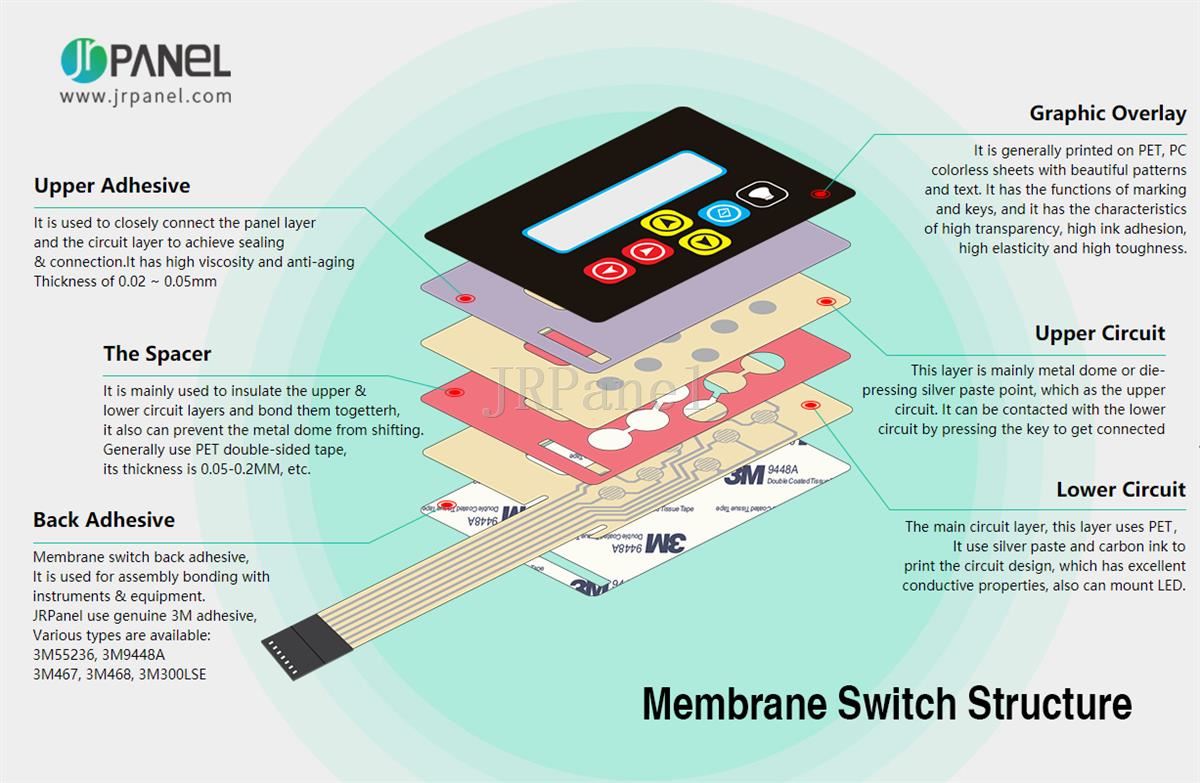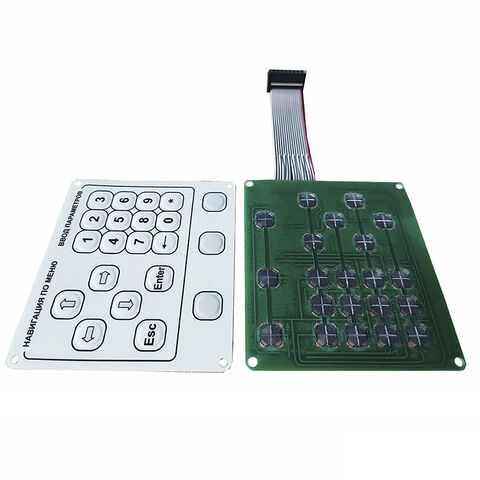Why a Membrane Switch Is Ideal for Industrial and Medical Applications
Why a Membrane Switch Is Ideal for Industrial and Medical Applications
Blog Article
The Benefits of Making Use Of Membrane Changes in Consumer Electronic Devices
Membrane buttons are increasingly identified for their significant advantages in consumer electronic devices, specifically in enhancing individual communication and streamlining production procedures. The versatility in layout permits for tailored services that fulfill diverse consumer needs.
Enhanced Individual Experience
In today's affordable landscape of customer electronics, improved individual experience is paramount; nearly 85% of users focus on user-friendly user interfaces. Membrane changes play a vital role in accomplishing this level of functionality. Their level, low-profile style enables for seamless integration right into numerous gadgets, reducing bulk while keeping functionality. This layout aesthetic not just improves the aesthetic charm however also adds to a much more structured user communication.
The tactile responses given by membrane switches is necessary for guiding individual activities, making certain that commands are signed up properly. This comments system enhances and decreases mistakes individual satisfaction, promoting a positive relationship in between the customer and the gadget. Additionally, the adjustable nature of membrane switches over enables producers to customize interfaces to details individual needs, making devices much more easily accessible and welcoming.
Furthermore, membrane layer switches can incorporate backlighting and graphic overlays, further improving exposure and use in diverse atmospheres. This adaptability ensures that devices remain user-friendly and useful, despite the setup. On the whole, the integration of membrane layer switches into customer electronic devices significantly boosts user experience, driving brand commitment and contentment in a progressively open market.
Economical Production
Customer electronic devices suppliers are continuously looking for ways to balance quality with cost, and membrane layer switches offer an engaging service for cost-efficient production. membrane switch. These components are naturally less complex than typical mechanical switches, which reduces both manufacturing expenses and complexity. The lightweight design of membrane layer changes permits reduced shipping costs and simpler combination into portable tools, additionally enhancing their appeal in an open market

Producers can create membrane switches in high quantities, making use of economic situations of scale. This automation capacity guarantees consistent quality while substantially reducing per-unit expenses. In addition, the materials made use of in membrane layer buttons, such as polyester and polycarbonate, are frequently less costly than those required for conventional button modern technologies, adding to general expense financial savings.
The manufacturing process for membrane layer switches over generally calls for less steps and less labor contrasted to various other switch kinds. This streamlined method not just reduces labor expenses but additionally speeds up time-to-market, enabling firms to respond quickly to customer need. The mix of lowered product expenditures and efficient production processes positions membrane switches as a smart investment for producers aiming to deliver high-quality customer electronics at affordable cost points.
Design Adaptability and Customization
While conventional mechanical buttons frequently enforce limitations on design due to their mass and needed installing systems, membrane layer switches supply unparalleled versatility and modification alternatives for customer electronics. This cutting-edge technology allows designers to create streamlined, low-profile user interfaces that can seamlessly integrate right into various item looks, from mobile phones to kitchen devices.
Membrane buttons can be produced in essentially any kind of shape or size, enabling suppliers to customize the design to specific ergonomic and useful needs. This versatility not only enhances customer experience however also permits artistic designs that straighten with brand identity. Moreover, making use of published graphics on membrane layer changes offers the possibility for intricate styles and vivid shades, which can be quickly modified without considerable price effects.
Additionally, membrane layer buttons can incorporate numerous functionalities right into a solitary layer, reducing the need for numerous elements and streamlining setting up processes. This streamlined style approach lessens room and weight, making it excellent for compact consumer electronics. On the whole, the style adaptability and personalization capacities of membrane layer switches over empower suppliers to introduce, eventually resulting in even more interesting and user-friendly products.
Longevity and Dependability
As innovation remains to progress, the durability and dependability of membrane layer buttons have actually come to be vital considerations for producers in the consumer electronic devices market. Membrane switches are developed to hold up against harsh environmental conditions, including temperature variations, wetness, and dirt direct exposure. Their go now durable construction typically includes multi-layered products that provide an efficient obstacle versus impurities, making certain long life and consistent performance.
In enhancement to environmental resistance, membrane layer switches over deal superior mechanical reliability. Unlike standard mechanical switches, which may break gradually, membrane layer switches make use of a closed design that minimizes the threat of mechanical failing. The lack of moving parts not just improves their life expectancy however additionally lowers wear and tear, making them perfect for high-usage applications.
Moreover, membrane switches can sustain a substantial variety of actuations without loss of capability, typically surpassing millions of cycles (membrane switch). This sturdiness translates to reduce replacement prices and decreased downtime for consumers and suppliers alike. Generally, the mix of environmental strength and mechanical dependability makes membrane changes a strategic choice for consumer electronic devices, making sure that devices stay functional and efficient throughout their desired lifespan

Streamlined Product Development
The resilience and integrity of membrane switches considerably add to structured product development in the customer electronic devices sector. By incorporating these switches early in the layout procedure, makers can reduce the intricacy and variety of components required in their products. Membrane buttons are lightweight and portable, enabling for extra reliable area usage within tools, which can result in simplified assembly procedures.
The convenience of producing membrane layer switches additionally plays an essential duty in product development. With click here for info modern printing methods and materials, manufacturing can be scaled efficiently, decreasing and decreasing lead times waste. This leads to lower production costs, boosting general productivity.

Verdict
In final thought, membrane changes considerably boost consumer electronics by offering an improved customer experience, economical manufacturing procedures, and functional style options. The integration of membrane layer changes represents a critical choice for makers looking for to optimize item layout and performance.
Membrane buttons are progressively acknowledged for their substantial benefits in customer electronics, especially in improving individual communication and improving production processes. In addition, official source the materials used in membrane switches, such as polyester and polycarbonate, are usually less pricey than those required for conventional button technologies, adding to total cost financial savings.
The production process for membrane changes typically needs less steps and much less labor compared to other button types. Unlike conventional mechanical buttons, which might wear out over time, membrane switches over utilize a covered layout that reduces the threat of mechanical failure.In verdict, membrane switches over significantly enhance consumer electronics by giving an enhanced user experience, affordable manufacturing processes, and flexible layout options.
Report this page